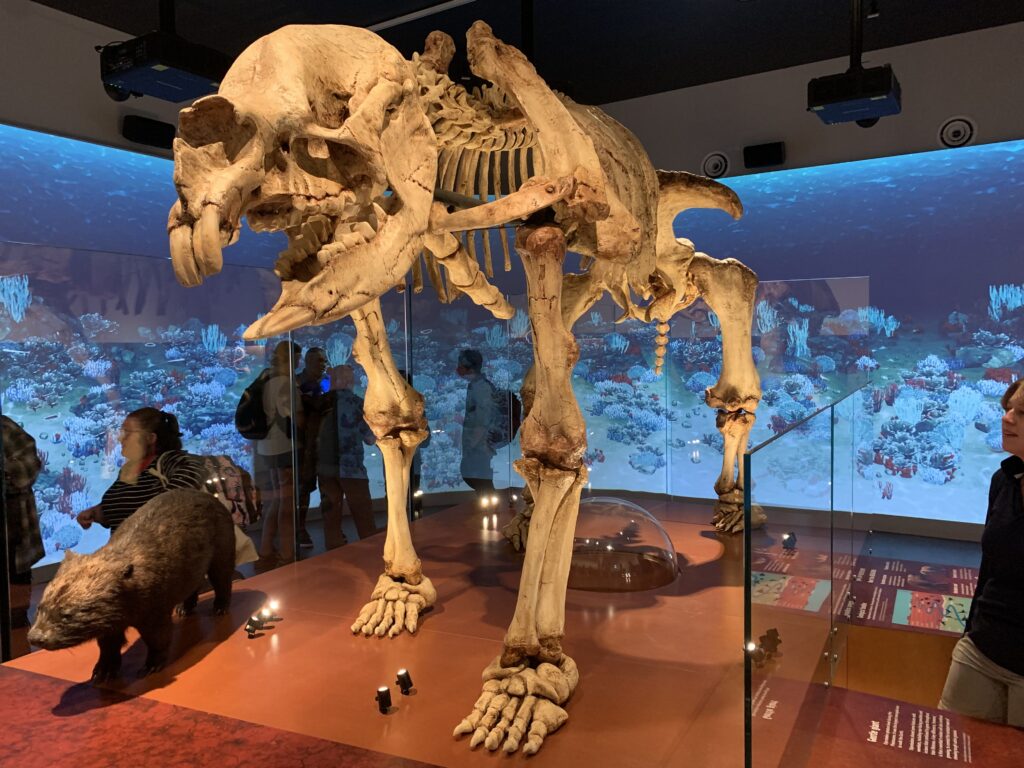Diprotodon optatum
Diprotodon
At around 2800 kg in weight, the iconic Diprotodon optatum was the largest marsupial to ever have lived. This large quadrupedal herbivore first appears in the fossil record during the late Pliocene, but was widespread across much of Australia during the Pleistocene. It was one of the last surviving of the cohort of large-bodies animals that become extinct in the late Pleistocene.
Click the links below to view more bones from this species, including a complete hand and foot.
Skeletal element: Skull half in cast (young adult)
Specimen number: SAMA P33102
Geological age: Pleistocene
Locality/site: Redbanks Conservation Park
State/territory: South Australia
